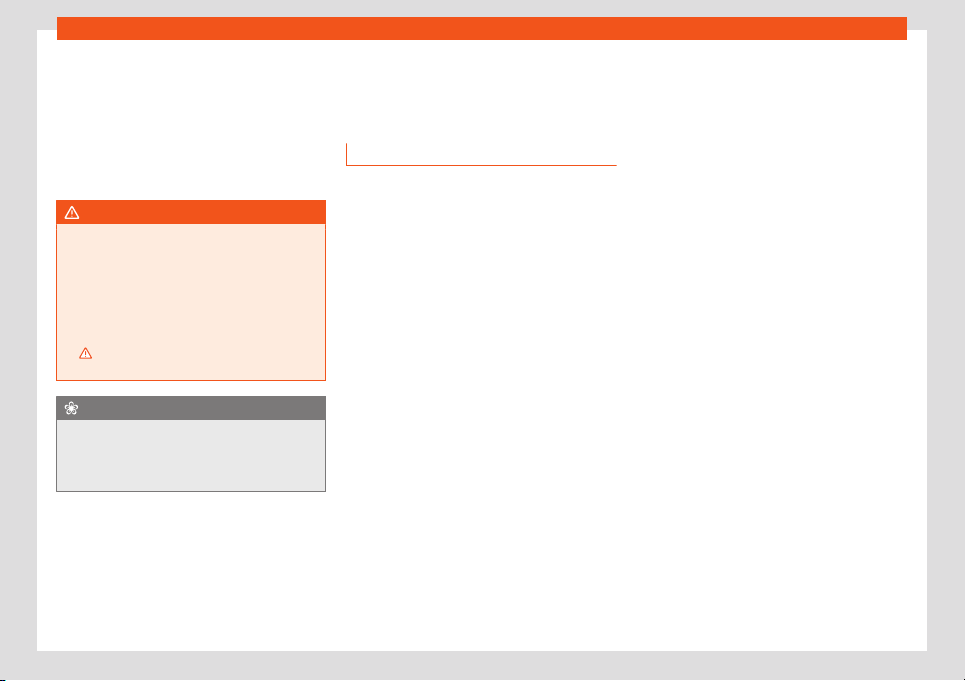Loading ...
Loading ...
Loading ...

Wheels
Replacing a vehicle battery
The batt
ery has been de
v
eloped to suit the
conditions of its location and has special
safety features.
Genuine SEAT batteries meet the mainte-
nance, performance and safety specifica-
tions of your vehicle.
WARNING
●
We recommend you use only maint
e-
nance-free or cycle free leak-proof batter-
ies which comply with standards T 825 06
and VW 7 50 73. This standard applies as of
2001 August or later.
●
Before starting any work on the batteries,
you must read and observe the warnings
›››
in Symbols and warnings on handling
the battery on page 309.
For the sake of the environment
Batteries contain toxic substances such as
sulphuric acid and lead. They must be dis-
posed of appropriat
ely and must not be
disposed of with ordinary household waste.
Wheels
Wheel
s and t
yr
es
General notes
–
When driving with new tyr
es, be especially
careful during the first 500 km (300 miles).
–
If you have to drive over a kerb or similar
obstacle, drive very slowly and as near as
possible at a right angle to the obstacle.
–
Check from time to time if the tyres are
damaged (punctures, cuts, cr
acks or
dents). Remove any foreign objects em-
bedded in the treads.
–
Damaged wheels and tyres must be re-
placed immediately.
–
Keep grease, oil and fuel off the tyres.
–
Replace any missing valve caps as soon as
possible.
–
Mark the wheels before taking them off so
that they rotate in the same direction when
put back.
–
When removed, the wheels or tyres should
be stored in a cool, dry and preferably dark
place.
New tyres
New tyres do not give maximum grip straight
away and should therefore be “run in” by
driving carefully and at moderate speeds for
about the first 500 km (300 miles). This will
also increase the useful life of the tyres.
The tread depth of new tyres may vary, ac-
cording to the type and make of tyre and the
tread pattern.
Low profile tyres
Low profile tyres, compared to other rim and
tyre combinations, offer a broader tread and
a greater rim diameter along with a lower
height of the tyre sidewall. This results in a
more agile driving behaviour. However, on
roads that are in poor condition, this might af-
fect comfort and cause more noise.
Low profile tyres may deteriorate more quick-
ly than standard tyres, for instance due to
strong knocks, potholes, manhole covers and
kerbs. Therefore, maintaining the correct tyre
pressure is particularly important
›››
page 312.
To avoid damage to tyres and wheels, drive
with special care when driving on roads in
poor condition.
Visually inspect your tyres every 3,000 km re-
garding damage, e.g. flattening/cracks on
the tyre sidewall or deformations/cracks on
the rims.
»
311
Loading ...
Loading ...
Loading ...